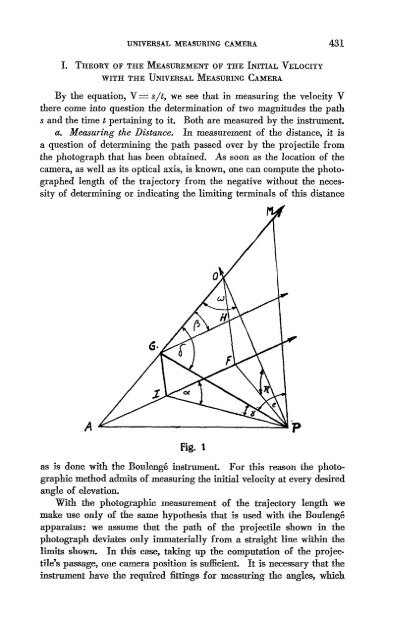COAST. I ARTILLERY JOURNAL, - Air Defense Artillery
COAST. I ARTILLERY JOURNAL, - Air Defense Artillery
COAST. I ARTILLERY JOURNAL, - Air Defense Artillery
Create successful ePaper yourself
Turn your PDF publications into a flip-book with our unique Google optimized e-Paper software.
UNIVERSAL MEASURING CAMERA 431<br />
I. THEORY OF THE MEASUREMENT OF THE INITIAL VELOCITY<br />
WITH THE UNIVERSAL MEASURING CAMERA<br />
By the equation, V= sit, we see that in measuring the velocity V<br />
there come into question the determination of two magnitudes the path<br />
s and the time t pertaining to it. Both are measured by the instrument.<br />
a. Measuring the Distance. In measurement of the distance, it is<br />
a question of determining the path passed over by the projectile from<br />
the photograph that has heen obtained. As soon as the location of the<br />
camera, as well as its optical axis, is known, one can compute the photographed<br />
length of the trajectory from the negative without the necessity<br />
of determining or indicating the limiting terminals of this distance<br />
A<br />
fig. t<br />
as is done with the Boulenge instrument. For this reason the photographic<br />
method admits of measuring the initial velocity at every desired<br />
angle of elevation.<br />
With the photographic measurement of the trajectory length we<br />
make use only of the same hypothesis that is used with the Boulenge<br />
apparatus: we assume that the path of the projectile shown in the<br />
photograph deviates only immaterially from a straight line within the<br />
limits shown. In this case, taking up the computation of the projectile's<br />
passage, one camera position is sufficient. It is necessary that the<br />
instrument have the required fittings for measuring the angles, which
















